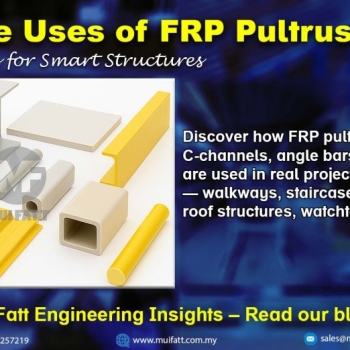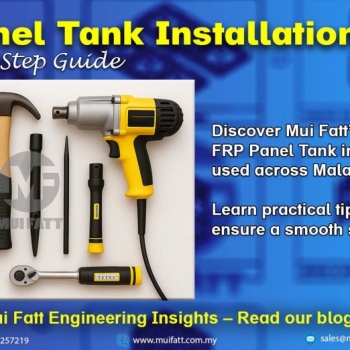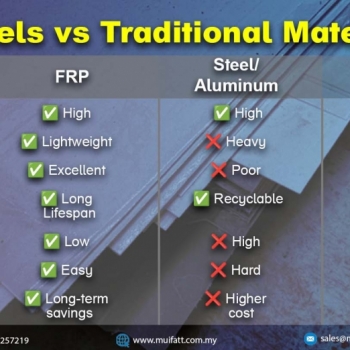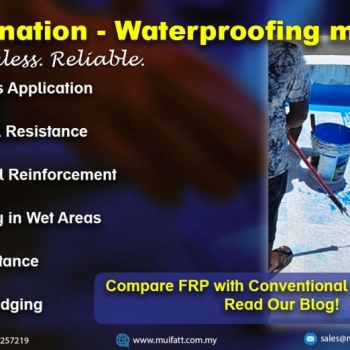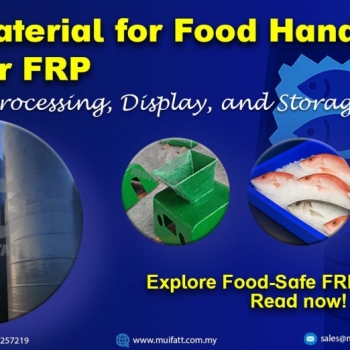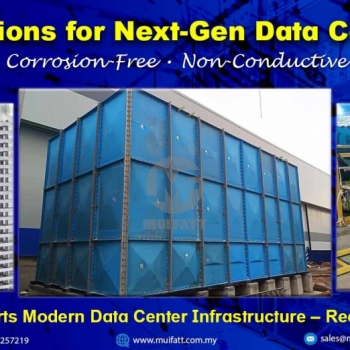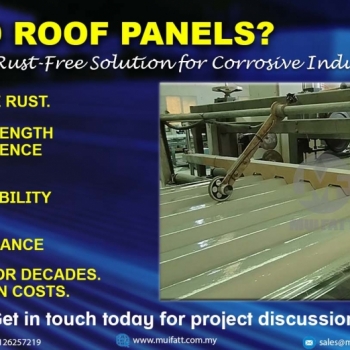FRP pultruded profiles are reshaping structural possibilities across Malaysia. From STP staircases to public park shelters, explore how these modular components enable custom FRP solutions—only from Mui Fatt.
Mui Fatt Insights: Advanced Materials for Modern Needs
26 May 2025
- Key Takeaways
- Introduction: Why Material Matters in Wet Environments
- Common Wet Area Challenges
- Downsides of Stainless Steel in Wet Environments
- Benefits of FRP in Wet Areas
- FRP’s Growing Adoption Across Industries
- How Mui Fatt Helps Clients with Wet Area Solutions
- Frequently Asked Questions (FAQs)
Key Takeaways
-
FRP is non-corrosive, chemical-resistant, and requires minimal maintenance.
-
Stainless steel corrodes easily in moist and chemical-heavy environments.
-
FRP is more cost-effective for food, sanitation, and drainage use in the long run.
-
Mui Fatt has proven success supplying FRP products in wet environments.
Why Material Matters in Wet Environments
Materials are constantly exposed to moisture, chemicals, and cleaning agents in food processing, sanitation, and public facility environments. Stainless steel may seem like the obvious choice, but is it the most reliable one? In this article, we explore why FRP (fiberglass-reinforced plastic) is quickly becoming the preferred alternative, especially for wet areas that demand long-term performance.
Common Wet Area Challenges
Water Exposure & Constant Moisture
Environments like supermarkets and restrooms have near-constant water exposure. Materials used here must resist warping, rusting, and bacterial growth.
Chemical & Cleaning Agent Contact
Industrial cleaning agents, disinfectants, and chlorine-based solutions wear down stainless steel over time, leading to costly repairs and safety risks.
Downsides of Stainless Steel in Wet Environments
Corrosion Risks & Surface Discoloration
Even high-grade stainless steel will eventually corrode when exposed to salt, acidic cleaning products, or humidity. Surface rust can form, impacting hygiene and appearance.
Maintenance Costs & Safety Concerns
Frequent scrubbing and chemical-resistant coatings are required to maintain stainless steel. These increase operational costs and downtime for businesses.
Benefits of FRP in Wet Areas
FRP offers a non-corrosive, non-conductive, and slip-resistant alternative that thrives in high-moisture environments.
Case Study – FRP Fish Tray in Supermarkets
Unlike stainless steel trays, our FRP fish trays withstand daily exposure to melting ice, seafood juices, and cleaning routines without deforming, rusting, or affecting food hygiene.
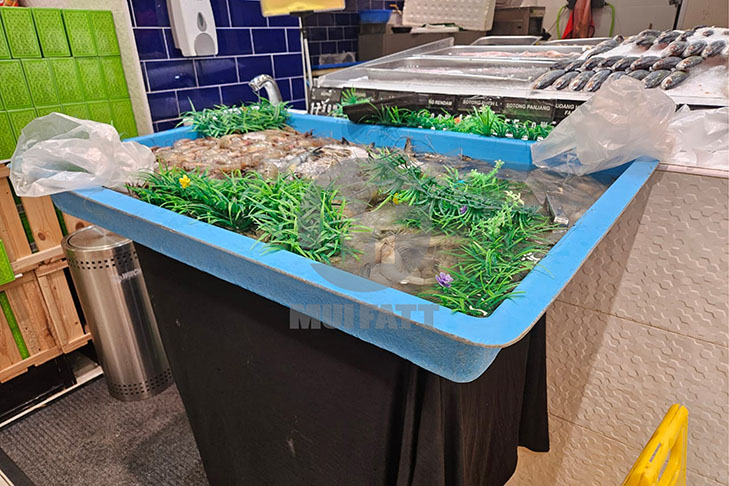
Case Study – FRP Grating in Restroom Drainage
In places like the restroom, our FRP grating drain covers handle regular contact with water, detergent, and cleaning acids, offering slip-resistance and zero corrosion.
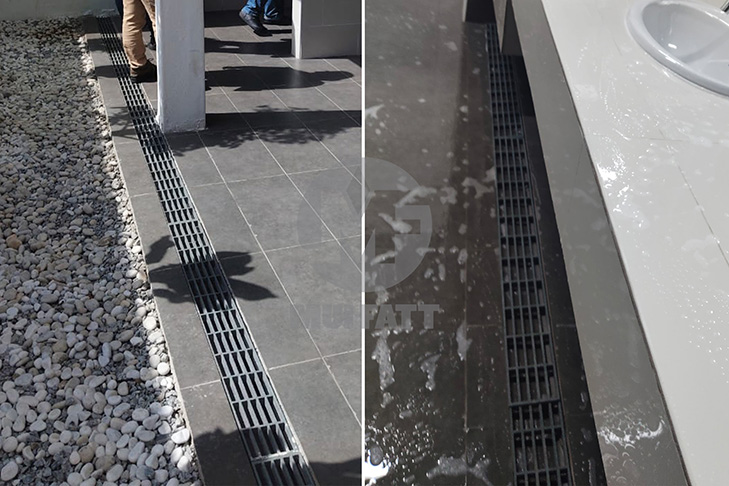
FRP’s Growing Adoption Across Industries
Industries such as food processing, wastewater treatment, and hospitality increasingly rely on FRP due to:
-
Lower life cycle cost
-
Light weight and high strength
-
Resistance to bacterial growth
-
Reduced downtime from maintenance
How Mui Fatt Helps Clients with Wet Area Solutions
With over 40 years of experience, Mui Fatt manufactures durable FRP products including trays, gratings, platforms, and covers that are ideal for wet and chemically exposed areas. Our solutions are customizable, SPAN/SIRIM/IKRAM-compliant, and proven through projects across Malaysia.
Explore our successful projects here - Project References | Successful FRP & PE installations
Frequently Asked Questions (FAQs)
Can FRP handle high humidity and cleaning chemicals daily?
Yes. FRP is engineered for environments with moisture, chemicals, and daily washdowns.
Is FRP food-safe for handling perishable items?
Absolutely. Our FRP trays are non-toxic, non-porous, and do not absorb liquids, making them ideal for food handling.
What is the lifespan of FRP compared to stainless steel?
FRP generally lasts longer in wet and corrosive environments due to its resistance to rust and chemical breakdown.
Is FRP more expensive than stainless steel?
Initial cost may be similar, but FRP offers better long-term value due to lower maintenance, no rusting, and longer service life.
Does FRP require coating or painting like stainless steel?
No. FRP has built-in color and chemical resistance, eliminating the need for external coating.
#FRPvsstainlesssteel #FRPinwetareas #FRPfishtray #chemicalresistantFRP #FRPdraincover #wetareamaterialcomparison #stainlesssteelcorrosion
Disclaimer:-
The content on this site is for general information and entertainment purposes and does not constitute legal counsel. We strive to keep our information as accurate as possible. However, we make no warranties about the completeness, accuracy, reliability, suitability, or availability with respect to the information contained on this page. You should rely on this information at your own risk. This website may include links to other third-party sites. These links are provided as a convenience to you as a reader, user, or browser only. We make no representation, warranty, or guarantee, nor do we endorse or take responsibility for any of the content of such sites.
Stay in touch with us if you’re interested in hearing from us promptly.
- Website - https://www.muifatt.com.my/home/
- Facebook - https://www.facebook.com/muifattmarketing
- Instagram - https://www.instagram.com/muifattmarketing/
- Google - https://goo.gl/maps/WxVY13gNcaRTS7Jp6
- Youtube - http://www.youtube.com/@MuiFattMarketing
- TikTok - https://www.tiktok.com/@muifattmarketing
- LinkedIn - https://www.linkedin.com/company/mui-fatt-marketing-sdn-bhd-
- Linktree - https://linktr.ee/muifattmarketing
- Shopee - https://www.shopee.com.my/muifattmarketing
- Lazada - https://www.lazada.com.my/shop/mui-fatt-marketing
Recent Blog
Mui Fatt Engineering Insights - FRP Panel Tank Installation
Get to know the step-by-step assembly process of FRP sectional panel tanks, based on Mui Fatt’s industry-proven practices. This easy-to-digest guide is ideal for project managers, contractors, and technical personnel involved in water storage tank installation across Malaysia.
FRP Panels vs Traditional Alternatives: The Ultimate Guide to Durability and Sustainability
Explore why FRP (Fiberglass-Reinforced Plastic) panels outperform traditional materials like steel, plywood, and PVC in durability, sustainability, and cost-effectiveness. Discover real-world applications in MyKiosk projects and cold truck panel assembly, where FRP’s superior insulation, corrosion resistance, and lightweight properties deliver long-term benefits.
Comparing FRP Waterproofing with Traditional Systems
Is FRP lamination a better waterproofing method than traditional systems? Explore this complete guide with real project examples and see why FRP is gaining traction across Malaysia.
Benefits of FRP in Food Handling & Processing
With hygiene, durability, and corrosion resistance at its core, FRP (Fibreglass Reinforced Plastic) is becoming a preferred material in the food industry. This article explores why FRP is ideal for food handling equipment such as supermarket fish trays, water tanks, and food factory platforms, plus how Mui Fatt is delivering proven solutions through its successful FRP applications.
How FRP Supports Modern Data Center Infrastructure
Discover how fiberglass-reinforced plastic (FRP) is reshaping data center construction. Learn its key advantages, comparisons with other materials, and where to apply FRP—from rooftop chillers to cooling tanks.
Understanding FRP Filament Winding: Process, Benefits & Comparison
This article explores the FRP filament winding manufacturing method, how it differs from other FRP techniques, why it’s still widely used, and its long-term value for projects like high-strength tanks and cylinders.
Rust Problems? Discover Why FRP Roofing Is the Superior Choice
Tired of dealing with rusted roof panels? Learn how FRP roofing offers a corrosion-free, custom-fit solution — and why it outperforms metal for industrial environments.
